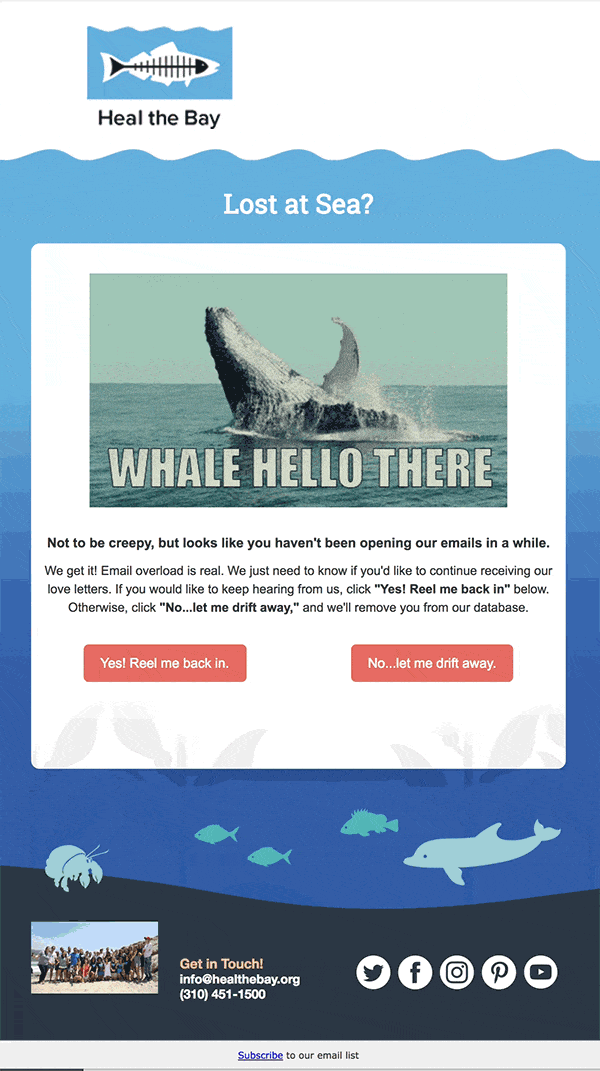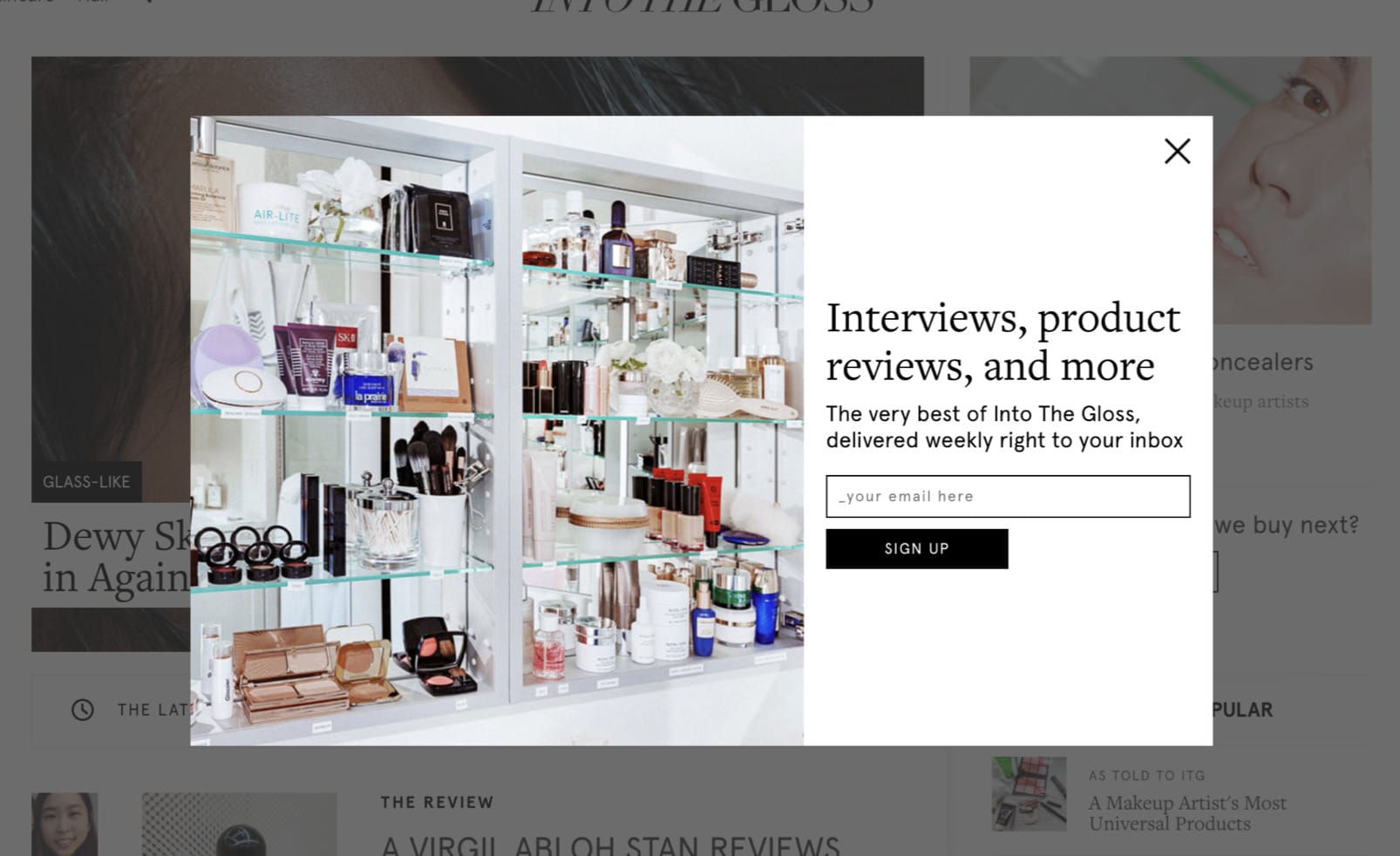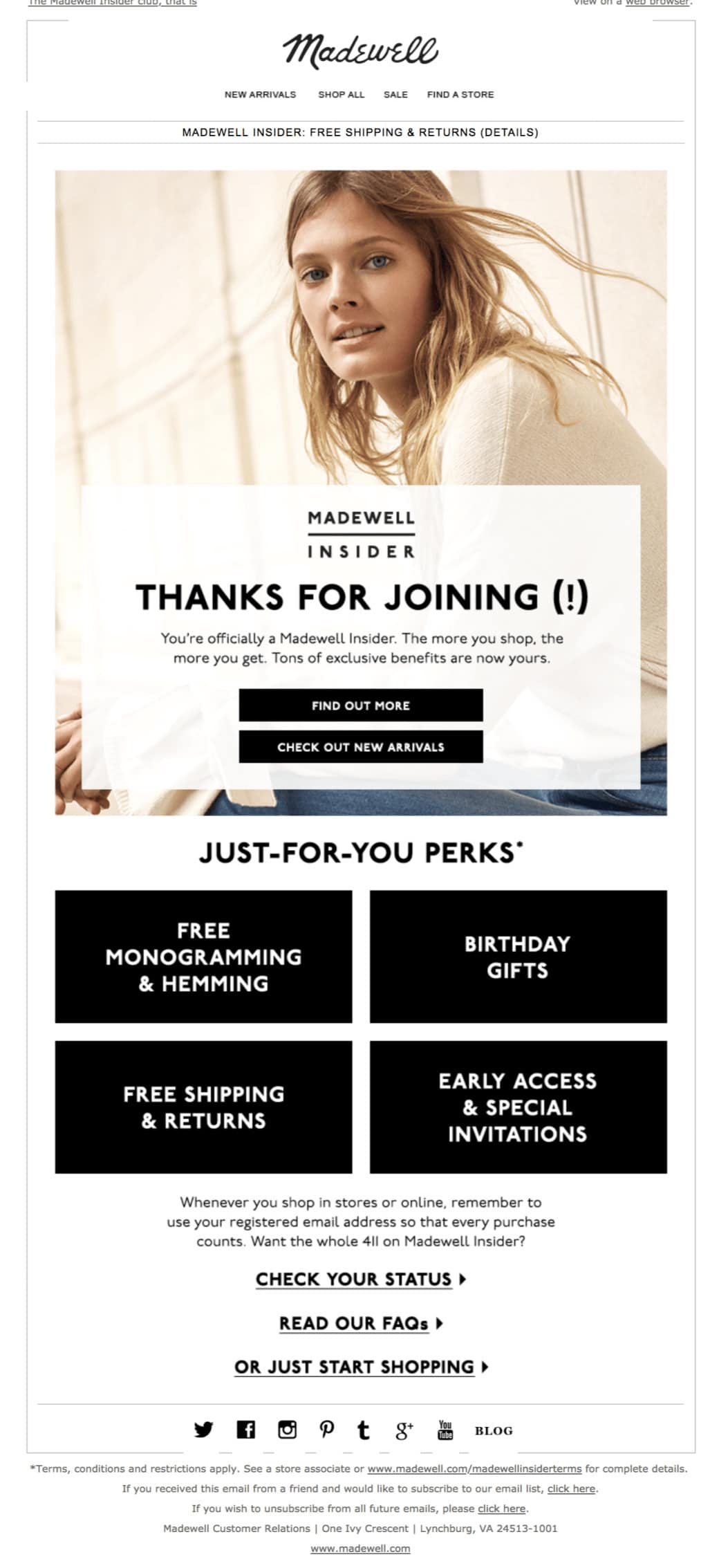Evolving your email audience to combat churn
Email marketing is all about building relationships.
It's one of the best vehicles available for increasing customer retention and maximizing lifetime value, but to make the most of it, you have to think beyond list growth. While many brands think the more subscribers the better, that isn't necessarily the case. A smaller, more engaged email list will almost always produce better results than a large, disinterested one. And while 25% of your contacts will churn each year on average (Campaign Monitor), the best way to combat that churn isn't necessarily to gain new subscribers—it's to better serve the ones you already have.
So how do you keep your subscribers around for the long haul?
1. Grow a healthy list from the start.
As with any relationship, there are a few things you need to do from the very beginning to create a lasting connection.
Step 1: Provide simple signup opportunities everywhere.
If you can't find your signup form within 2-3 seconds of landing on your website, you need to take another look at your list building strategy. In an ideal scenario, you should supply an easily discoverable signup form on your homepage, then supplement that form with other signup opportunities at every audience touchpoint. This could include:
• Embedded forms
• Lightbox forms
• In-person signup through an iPad
• Social media or SMS
Step 2: Set the right expectations from the beginning. On your form, tell potential subscribers exactly what they can expect from you in terms of content, offers, and send cadence.
Step 3: Have a clear value proposition for joining your list. Most prospective subscribers won't sign up for your list unless you provide a compelling incentive to do so, like a discount or access to exclusive content.
Step 4: Collect the right data from the get-go. If there's a data point you need right away to send relevant messaging (location info for a brick-and-mortar restaurant chain, for instance), be sure to include it on your form.
2. Use automation to build long-term brand engagement.
Welcome emails
Automated welcome emails have become non-negotiable for any brand hoping to get results in the inbox. Not only do subscribers expect them, but they're some of the best-performing emails you'll ever send, with an average open rate of about 50%. Set one up to fire off immediately after someone signs up for your list. Introduce your brand, follow through on any promised content or offers, and use it as an opportunity to get subscribers to manage their preferences.
Date-based emails
You can use date-based automation to celebrate special occasions, like birthdays or signup anniversaries or remind customers to replenish goods or services (think subscription-based ecommerce like Dollar Shave Club).
Link click emails
You can also automate based on actions your subscribers take in the inbox. When someone clicks a link in your email, amp up the relevance of your next message by following up with similar content or complementary products.
3. Segment your audience to send more relevant emails.
To ensure your subscribers stay interested in your emails, you have to serve up relevant, engaging content and messaging—and segmentation is the easiest way to ensure you do just that. Though the best ways to segment vary by your brand, audience, and industry, here are a few ways to start...
Segment based on the data you've already collected:
• Data fields on your signup form
• How they signed up (landing page, in person, etc.)
• Data in your CRM
• Self-selection through a preference center
Segment based on response history:
• Have opened
• Have not opened
• Have clicked
• Have not clicked
4. Re-engage your audience to maintain list hygiene.

Remember: If you do end up losing some subscribers, it isn't the end of the world. Unsubscribes hurt, for sure, but they can actually be beneficial in the long-term.
Wrapping it up
Here's an email marketing rule to live by: Always serve up the kind of emails you'd actually want to receive as a subscriber. If you plan your strategy with that in mind, you'll ensure your subscribers want to maintain a connection with your brand, maximize lifetime value, and combat audience churn over time.
MOST RECENT ARTICLES
Want to engage your audience and grow your brand? Try Emma's robust easy-to-use product today.














